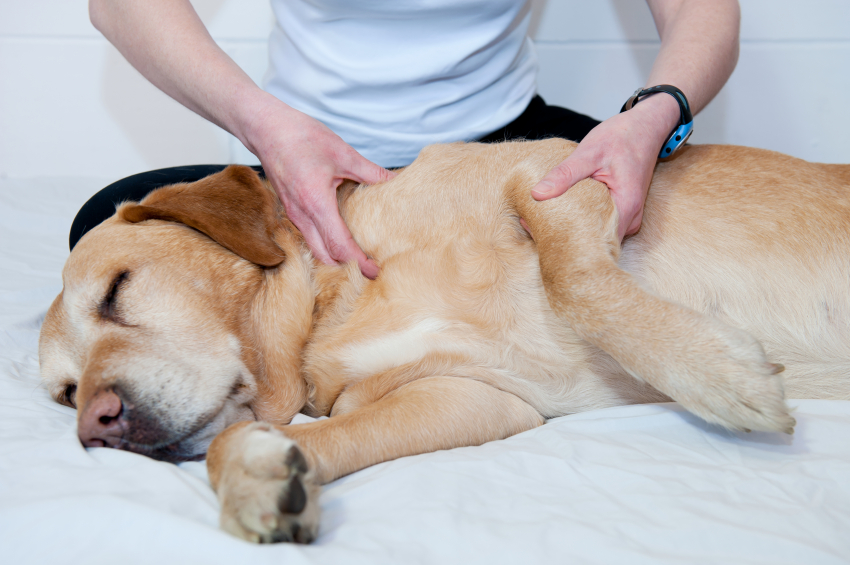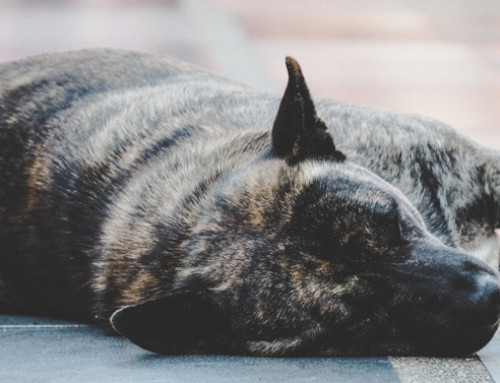As with us humans, osteoarthritis is one of the most common ailments affecting dogs as they age, and also as with humans, natural therapies can help with management of this condition.
Osteoarthritis is a degenerative joint disease which involves the slow erosion of joint cartilage causing the bones to rub together, which as you can imagine would be very painful and debilitating for your pet. Osteoarthritis can be genetic (eg hip dysplasia), part of the ageing process, or the result of an injury. Fortunately there are a few treatments which can help including anti inflammatories, nutrition and dietary supplements and an exercise regime. Natural therapies can be an alternative for those of us who want to manage paid without the use of chemically based drugs. Just like humans, remedies include acupuncture, chiro, massage, stretching and special exercises.
Acupuncture
Acupuncture is the insertion of fine needles into specific points that release energy. Whilst it doesn’t sound very pleasant, in fact it can be very relaxing and many dogs fall asleep whilst being treated! Acupuncture is based on energy flowing through meridians and the needles affect the flow of energy. The results can be a reduction in pain and inflammation, increased mobility, and generally improvement in wellbeing and quality of life. One the advantages of acupuncture is that there are no side effects to worry about which means the dog can undergo treatment for many years without concern.
Trigger point therapy
Trigger points are spots in muscles that form after injury or misuse. Trigger point therapy releases the trigger point to help with the pain. The first step with trigger point therapy is to deactivate the trigger point with acupuncture and then stimulate the painful point itself. Then a strong massage to stretch out the point for a good minute. Whilst it can be uncomfortable for your pet, it does help to improve mobility.
Chiropractic adjustment
An animal with sore hips will automatically shift their weight to compensate, which in turn can put stress on their back which results in muscular tension. This can cause back pain and creates difficulty with walking. A simple back massage and stretching exercises at home can help in between adjustment sessions with the chiropractor.
Physiotherapy
Physiotherapy aims to rehabilitate and improve musculoskeletal disorders through a variety of techniques. Some techniques include using machines, bandaging or strapping to treat swelling and support joints, warmth and ice for pain, swelling or spasm control and hands on massage, manipulation and joint mobilisation. Physiotherapy can be good for looking after joint health and keeping a range of movement, but it is also good to get assistance with joint nutrition. Walking is generally good, but dogs with arthritis may need more frequent shorter walks, rather than long walks. Treadmills offering a range of speed and training modes can also be of assistance. But this needs to be done with a professional as it is important to be gently so that there is not extra strain on the body. Good thing is that come rain or shine, conditions are always right!
Hydrotherapy
Hydrotherapy is exercise, treatment or rehabilitation in water, generally heated pools or underwater treadmills, or both. Hydrotherapy builds up muscles without putting strain on painful joints. Swimming is of course also great for general fitness, but if a dog as had cruciate ligament surgery or hind limb problems it does better with walking as it needs to bear some weight. Also bear in mind that dogs can cheat – they use their front legs instead of their hind legs, so you need to watch them to make sure you know what they are up to!
Ask your vet for a referral or for more information on natural therapies visit www.acupet.com.au or www.naturalvet.com.au or www.sydneyanimalphysiotherapy.com.au or www.allnaturaldog.com.au







Leave A Comment